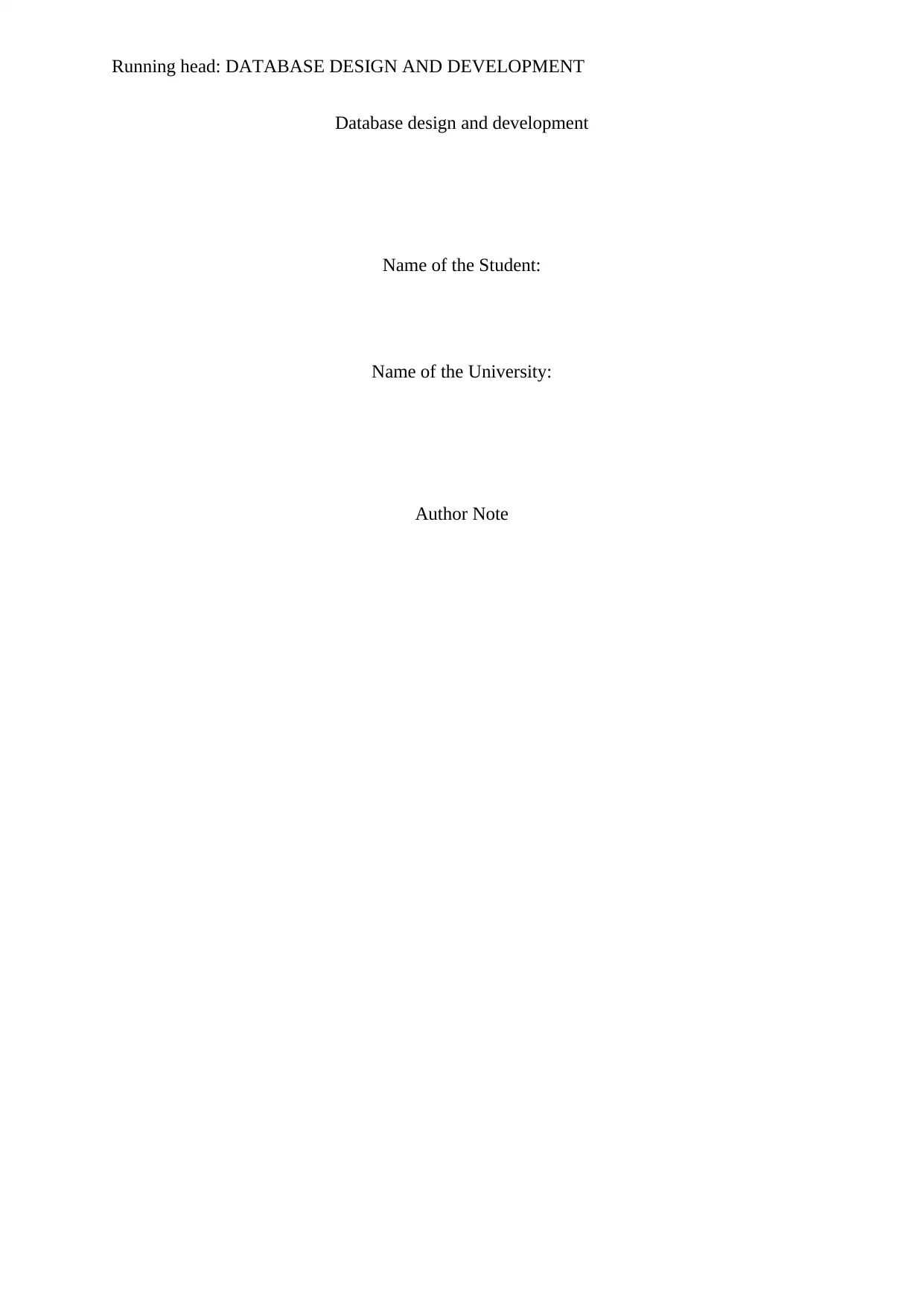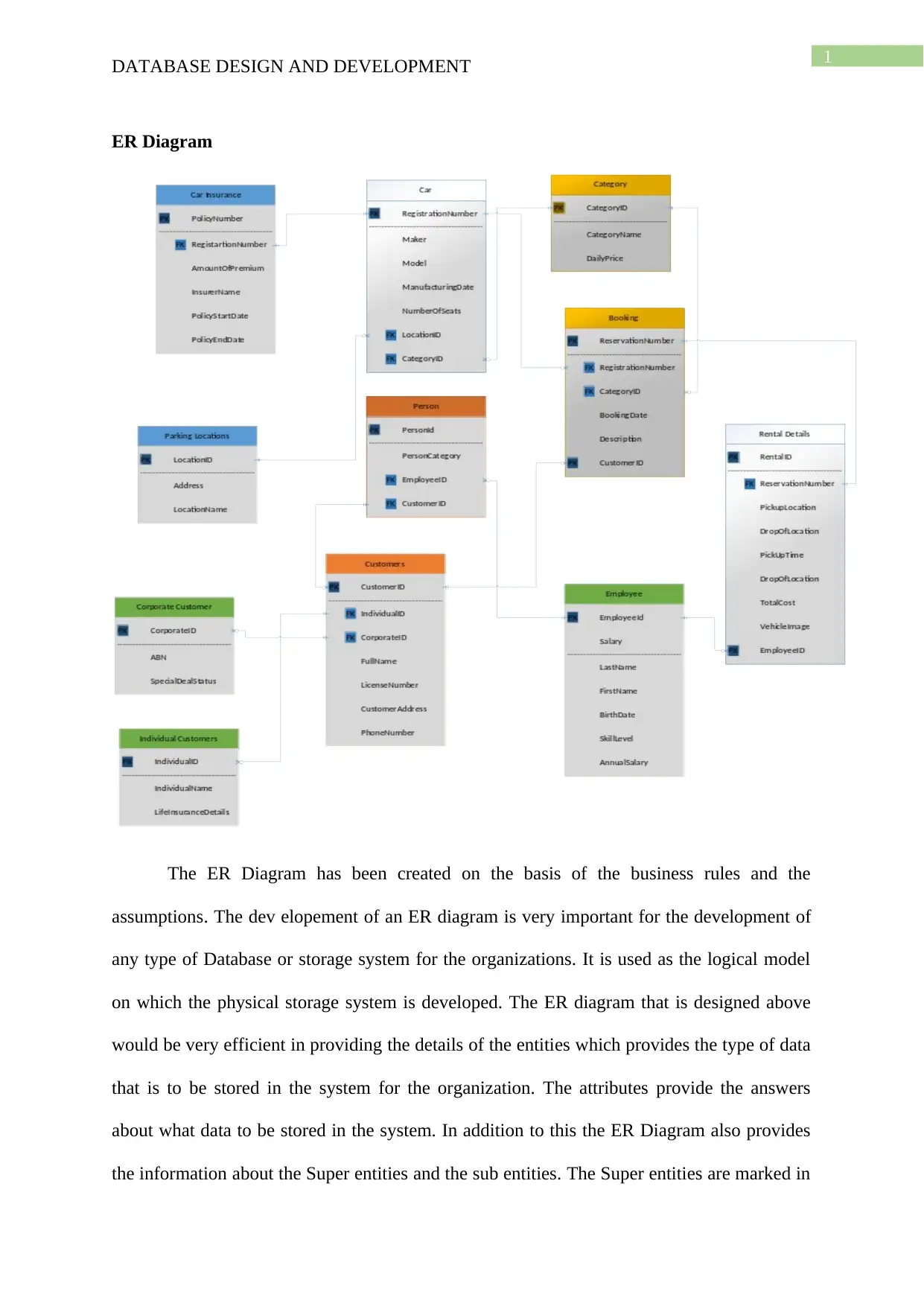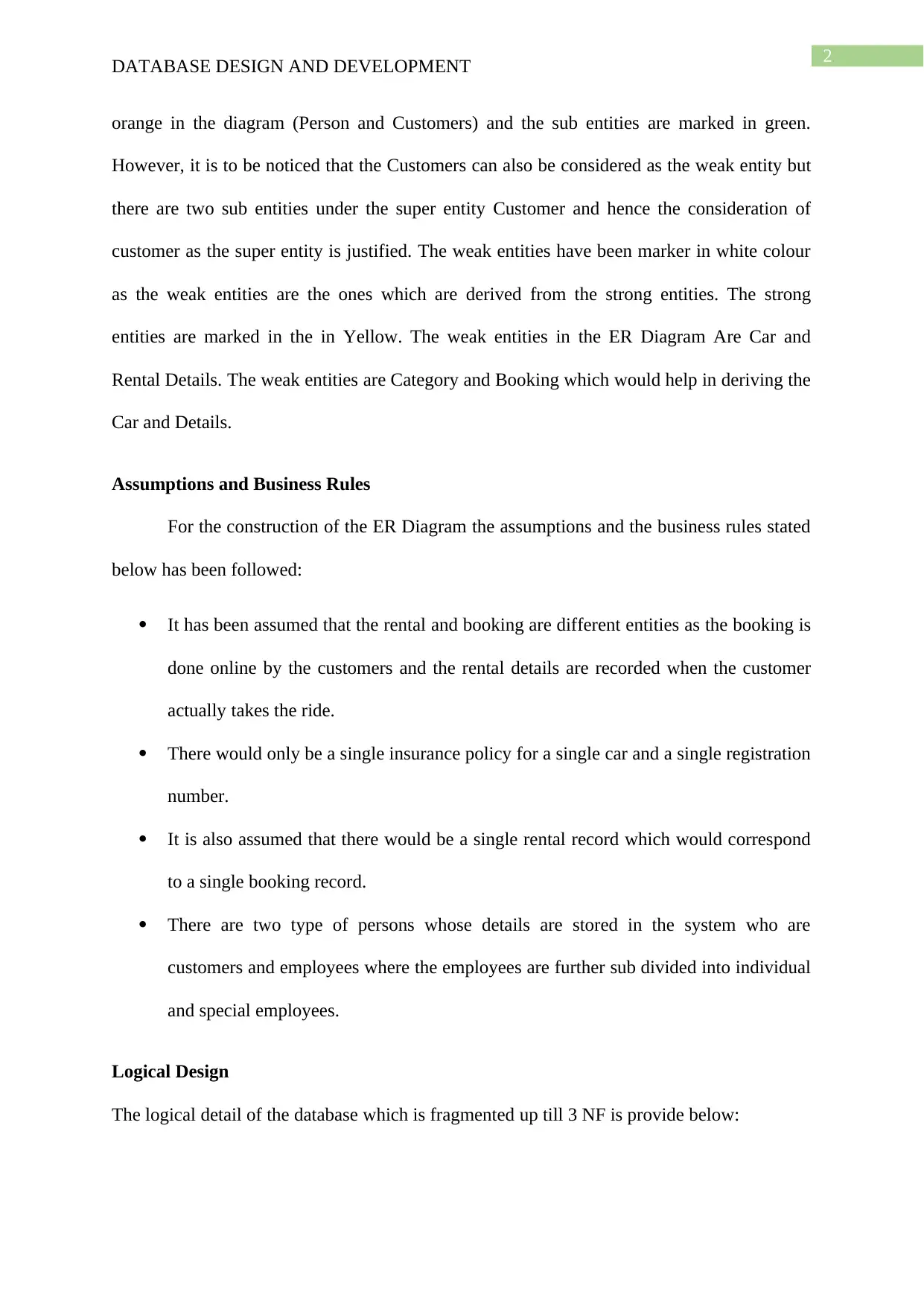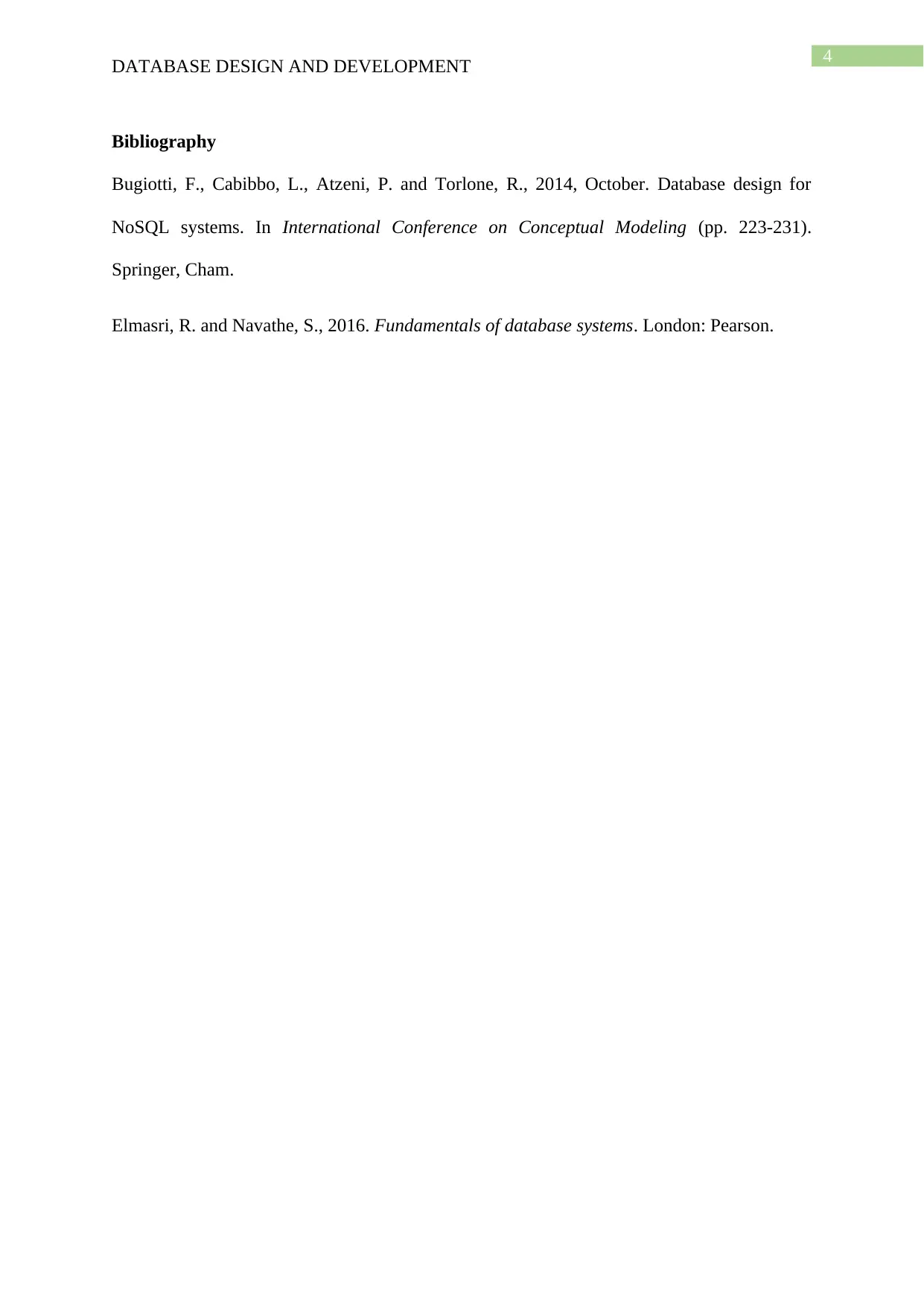Database Design and Development: Assignment - ER Diagram & 3NF
VerifiedAdded on 2023/06/08
|5
|751
|445
Project
AI Summary
This assignment focuses on database design and development, presenting a comprehensive solution for a given case study. The solution includes an Entity Relationship (ER) diagram, which visually represents the database's entities, attributes, and relationships. The ER diagram is designed based on specific business rules and assumptions, providing a logical model for the database's structure. The assignment also includes a logical design, detailing the database's tables and their attributes, and demonstrating the relationships between different entities. The document further provides the database design up to the 3rd Normal Form (3NF), ensuring data integrity and minimizing redundancy. The assignment addresses the core concepts of database design, making it a valuable resource for students studying database management and related fields. The document includes a bibliography of relevant research papers and books. The assignment is based on a car rental business scenario.
1 out of 5









![[object Object]](/_next/static/media/star-bottom.7253800d.svg)